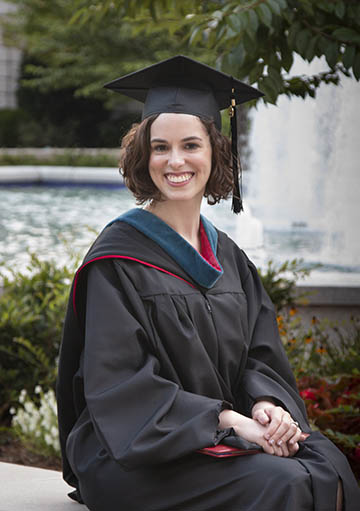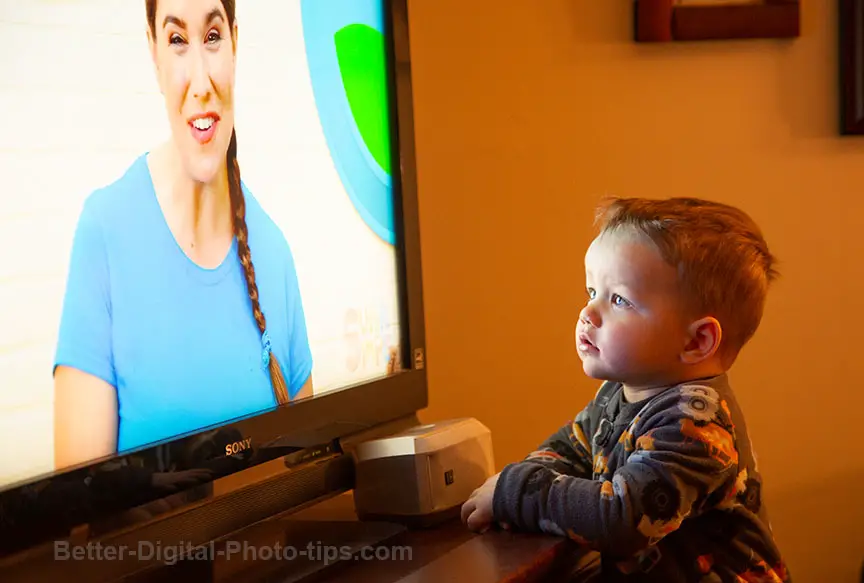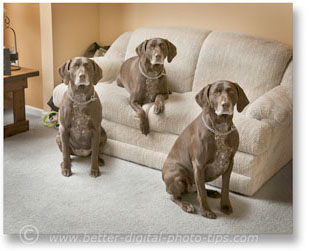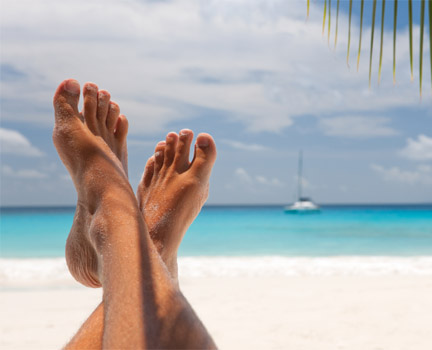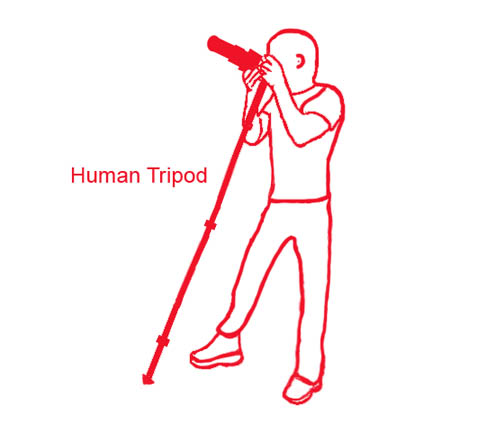HOW TO POSTS: LIGHTING AND COMPOSITION
The Best Shutter Speed For Outdoor Portraits
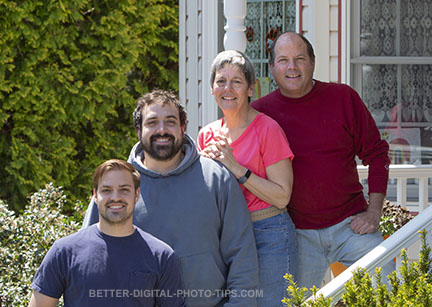 Bright Sunlight
Bright SunlightShutter Speed @ 1/640 Second
Facing a large variety of lighting conditions and locations can make choosing the best shutter speed for outdoor portraits confusing.
This guide will give you the best starting point for shutter speeds when you're photographing people in the great outdoors, and then we'll go more in depth into the variables that will dictate you making slight adjustments to the shutter speed to get the best portraits.
You can brush up your understanding of all the important camera settings in the article that I just updated, titled basic settings.
starting shutter speeds FOR outdoor portraits
1. SHUTTER SPEED. A good general rule for how to set your shutter speed for blur free portraits is to use the reciprocal of your focal length. For example, if you're shooting with a 100mm lens, set your shutter speed for 1/100 second.
2. IMAGE STABILIZATION. If you have image stabilization (IS) of 2 stops, you can adjust your shutter 2 stops slower. In the example above, you can use 1/25 second for a shutter speed.
This gives you a good starting shutter speed for outdoor photos to start with, but-there always is a but-there are several factors that come into play that you will want to know about.
Those shutter speeds assume that your subject is stationary and isn't moving. Ideally you could call them minimum shutter speeds for outdoor portraiture.
Using faster shutter speeds gives you a little breathing room and increases the likely that you'll succeed in taking a sharp portrait.
Here are the various minimum shutter speeds you can use with the variables of using image stabilization, how steady your hands are, and whether you're using a tripod. At the slower shutter speeds of 1/15 second or slower you're likely to have some blurring of your subject because we humans don't stay perfectly still.
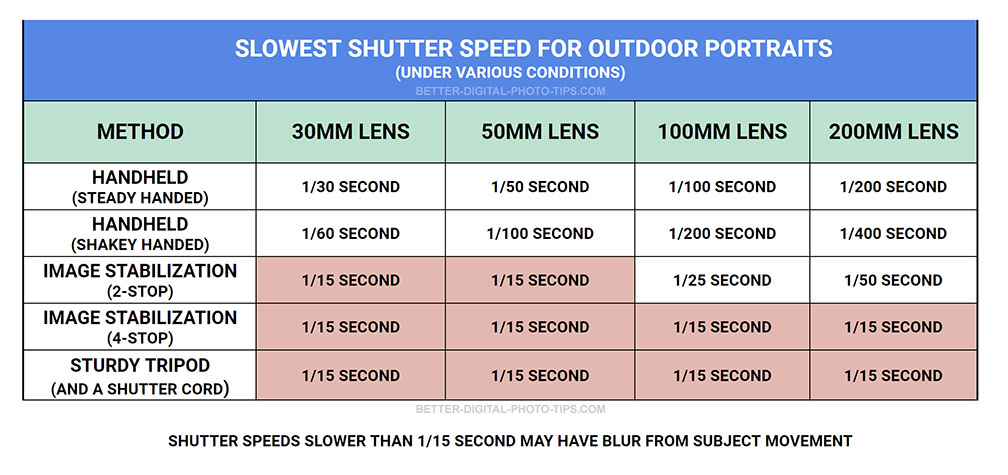 The best shutter speeds for portraits have a minimum needed for acceptable sharpness and sharpness will improve as you set your shutter speed faster.
The best shutter speeds for portraits have a minimum needed for acceptable sharpness and sharpness will improve as you set your shutter speed faster.The best shutter speed can be ( and should be) faster than these minimums if at all possible. Although you outdoor portraits taken with slow shutter speeds may seem sharp at first, if you exam them closely on your computer, or on a print, you may see a lack of sharpness.
shutter speed for moving subjects
If your subject is moving, you may need to play it safe and use an even faster shutter speed to prevent any motion blur. This is from an outdoor wedding I photographed where the couple walked back from the location where they exchanged their vows.
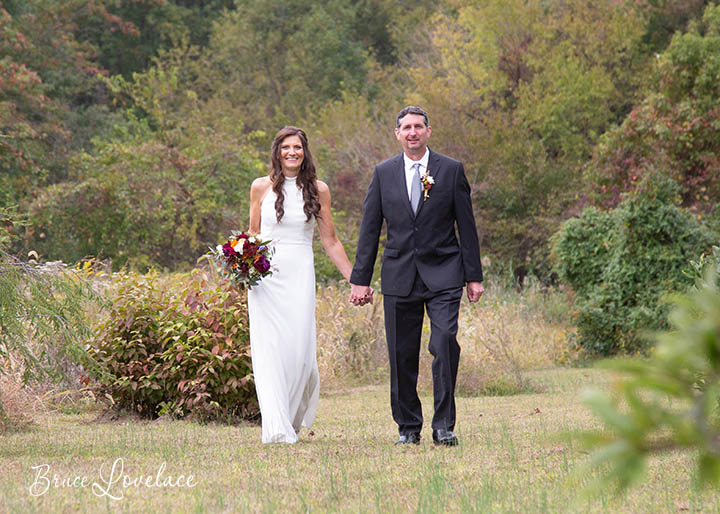 Shutter speed was 1/500th second.
Shutter speed was 1/500th second.This was to prevent blur while using a long lens and shooting a moving subject.
shutter speed for portraits when using a tripod
You may not think of using a tripod when shooting outdoor portraits because it's usually quite bright enough to get a nice fast shutter speed to prevent any blur from camera movement. Who is in your outdoor portrait may affect both the shutter speed you choose and whether you will use a tripod.
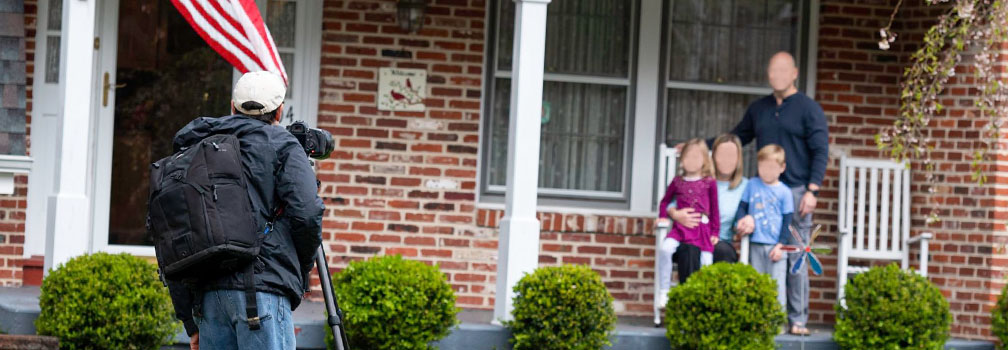 Using a tripod allows me to maintain eye contact while I'm photographing my subjects.
Using a tripod allows me to maintain eye contact while I'm photographing my subjects.I ALWAYS use a tripod for posed group portraits outside, but I never use a tripod for candid photos of kids. If your subject is running around the slowest shutter speeds won't work. For moving portrait targets, faster shutter speeds are need to freeze the action.
a. SHUTTER SPEED FOR INDIVIDUALS OUTDOORS
When photographing individual people outdoors I usually ditch the tripod, use a wide open aperture to get shallow depth of field, and thereby enabling me to use a faster shutter speed. I often shoot at 1/400 second or faster as I'm using a very long lens which will magnify any blur from camera movement.
b. SHUTTER SPEED FOR GROUPS OUTDOORS
In addition to the benefit of keeping your camera steady for sharp portraits, a tripod gives you the ability to use slower shutter speeds when the outdoor conditions are darker.
This is especially valuable for me when I do portrait sessions after the sun has gone down, particularly when I'm at the beach. It's also valuable during the shorter winter months, when the days are short and the light fades quicker. Sometimes this means using a shutter speed of 1/30 second. That also allows me to use a smaller aperture to insure that I get a good depth of field and everyone in the photo is in sharp focus.
The hidden benefit and the most important reason I use a tripod for outdoor portraits is that I can frame in my shot AND watch my subject in real time from behind the camera.
CHART of best shutter speeds
I included this chart from the comprehensive article on shutter speed basics because it shows where shutter speeds for portraits fits into the overall scheme of things, compared to other types of outdoor photography.
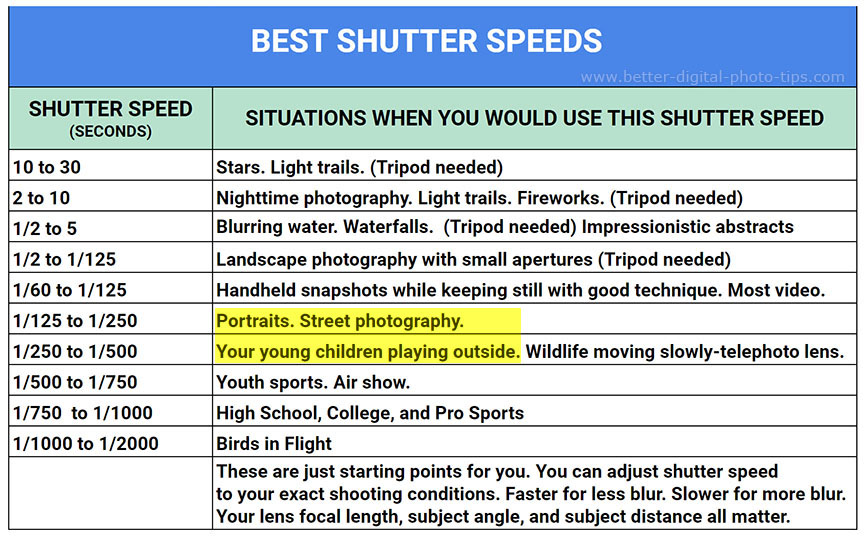 Taken from detailed article on Understanding Shutter Speeds
Taken from detailed article on Understanding Shutter SpeedsThe large majority of outdoor portraits are taken with shutter speeds between 1/60 and 1/250 second.
shutter speeds for portraits with image stabilization
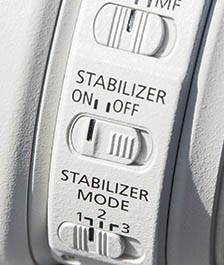
Sometimes, technology is a wonderful thing. In the case of choosing the best shutter speed for outdoor photography, it truly is a great advancement.
At the time of this writing there are cameras and lenses that boast a 4-stop image stabilization (Nikon calls it vibration reduction). That's remarkable.
That means your camera/lens set-up will make instantaneous adjustments to counteract any camera movements you make as you shoot each portrait. A 4-stop stabilization is equivalent to a 16 times slower shutter speed that you can use and still get a reasonable sharp portrait. See the chart.
CLOSING thoughts on good shutter speeds for outdoor portraits.
You got the quick answer and the long answer when it comes to the best shutter speed to set your camera on when shooting portraits outdoors. Generally speaking, it's best not to use the very slowest shutter speed possible that just achieves the desired sharpness. It's better to use a faster shutter speed and you know you'll get crystal sharp photos. The technology has advance-we just need to understand how to use it.


ABOUT BRUCE LOVELACE
Bruce is the publisher of this website. He is the author of the book "Improve Your Photography Instantly." Read more on Bruce on his Bio Page. He's been known as The Traveling Photographer ever since 1994. Read more about this website.
View some of Bruce's photos on Instagram. Visit the Facebook Page. Watch him on YouTube. Bruce runs photo workshops for kids and adults, and provides one-on-one photography coaching.
Digital Photography Education Location on Google My Business
